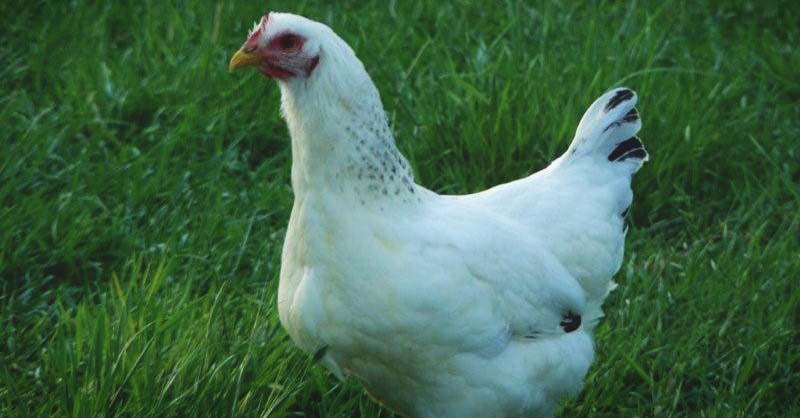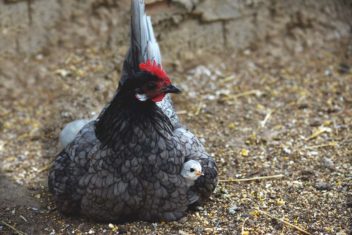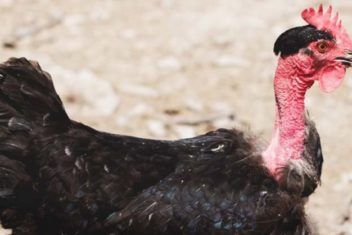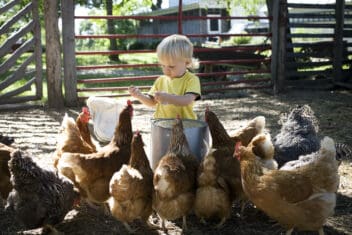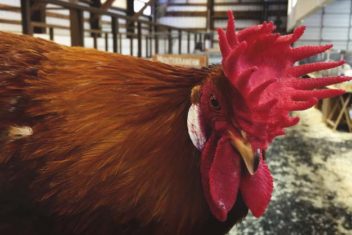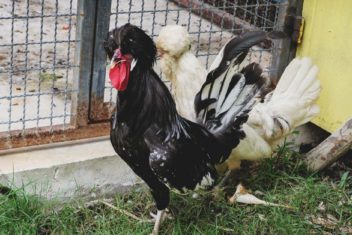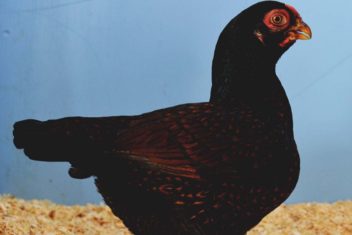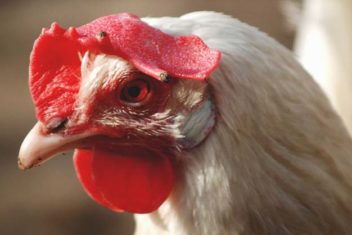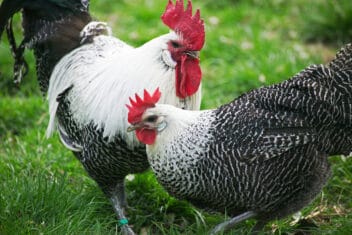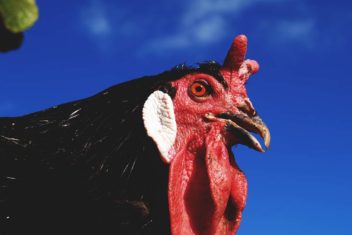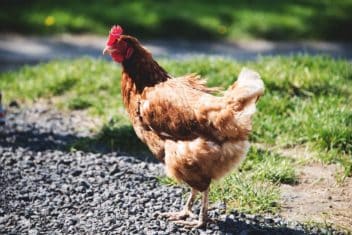For the farmer interested in a good bird with no frills, these simple but beautiful chickens are a great, no-nonsense breed.
Delaware chickens were once a leading breed for the meat industry. The Delaware also lays a large number of eggs in addition to their meat qualities.
Today, Delaware chickens are not nearly as popular in the commercial meat industry and are actually facing the threat of endangerment. Any farmer after a good meat producer and egg layer will surely be interested in this marvelous breed.
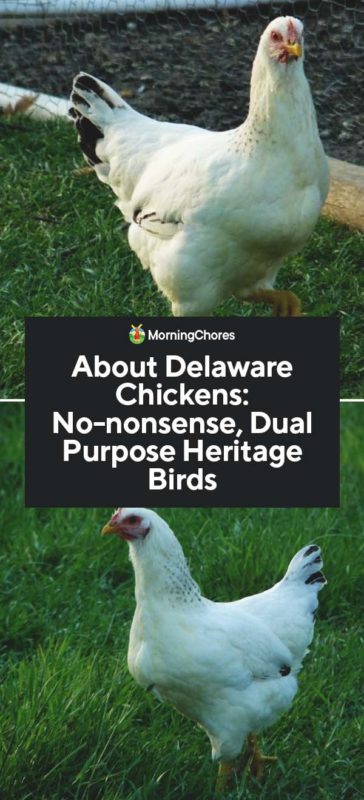
About Delaware Chickens
The Delaware breed was breed developed in 1940 by crossing mainly Barred Plymouth Rocks and New Hampshire Reds to create this beautiful white bird.
On top of the fact the breed is nice and large, their white feathering makes them a good table bird. White feathering doesn’t leave dark patches on the skin, giving the carcass a great appearance.
Delaware Characteristics
1. Size and Weight
These chickens aren’t a heavy breed, despite the fact they’re commonly raised for meat. Delawares are a medium sized breed. Hens weigh about 6.5 pounds at a fully grown weight. Roosters weigh around 8.5 pounds.
2. Temperament
Delawares have rather calm temperaments, but not overly friendly personalities. The hens are often inclined to go broody and make fantastic mothers when they do go broody.
Roosters are also well behaved and make good flock watchers.
3. Egg Production
For a slightly larger breed, Delawares have fantastic egg production. You can expect an average of about 280 eggs per hen annually. Compared to many other dual purpose breeds, this is a decent step above the rest.
4. Meat Production
It’s no secret why these birds were once a leading producer for the meat industry. Beautifully dressed carcasses with a large amount of meat on them make for a great choice.
Delawares are also commonly crossed with a New Hampshire Red for a good meat hybrid.
Caring for Delaware Chickens
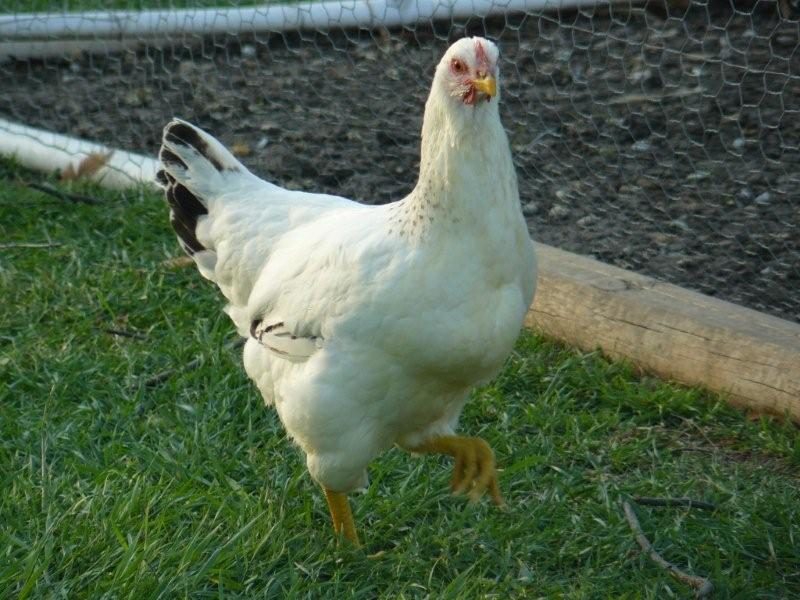
1. Feeding and Nutrition
Delawares aren’t particularly needy chickens when it comes to food. Give them food and they’ll happily indulge. Chicks need to begin their lives eating a high-quality chick starter for 8 weeks. Once your birds are around 8 weeks old, they need to be on a grower feed.
Most feed stores sell starter/grower combos, and if your chicks are already eating that, you’ve got nothing to worry about. Around 16 weeks of age, make the final transition to a good laying feed.
It’s also a good idea to provide additional calcium in a separate dish so your chickens can supplement themselves when they need to.
2. Housing and Fencing
Delawares are fantastic foragers, and if you have the space to let them do so, they’ll thrive in such an environment. If you choose to keep your birds in a run, allow 10 square feet per bird so they have plenty of room.
Inside the coop, it’s best to provide around 4 square feet per bird to make sure they have space to avoid squabbles.
3. Health Issues and Care
These birds are rather robust and healthy birds with few issues. It’s always best to keep a diligent eye on your flock to catch the problems before they become hard to maintain.
One thing that can be an issue with all chickens is internal and external parasites. Mites, lice, and worms are a problem and can cause issues such as weight and feather loss.
4. Breeding
One fun thing about Delawares, is you can breed Red Sex-Links from them. If you cross a New Hampshire Red rooster with a Delaware hen, the chicks will be sex-linked. This means you’ll be able to sex your chicks based on the color of their down when they hatch!
Delawares need dedicated breeders to preserve the breed since they are in threatened with endangerment.
Alternative Breeds
1. New Hampshire Red
These chickens are nearly the same as Delawares when it comes to meat and egg production. If you’re not after a white chicken, New Hampshire Reds are a nice break in color. These chickens can also do better foraging because their color helps them blend in and hide from predators.
2. Plymouth Rock
Plymouth Rocks are very friendly chickens if you want to raise a more amiable bird than a Delaware. This breed also has excellent meat and egg production. Paired with their great personalities, what’s not to love?
Did you know?
In 2009, the American Livestock Breed Conservancy had this breed listed critically endangered. In the last several years, some dedicated breeders have raised the numbers and Delawares are now only listed as being watched by the American Livestock Breed Conservancy.
For the urban or rural farmer, this chicken is an excellent choice. A good forager, paired with exceptional egg and meat production, this is just a great, well-rounded bird! You certainly won’t regret the addition of this bird to your flock.

